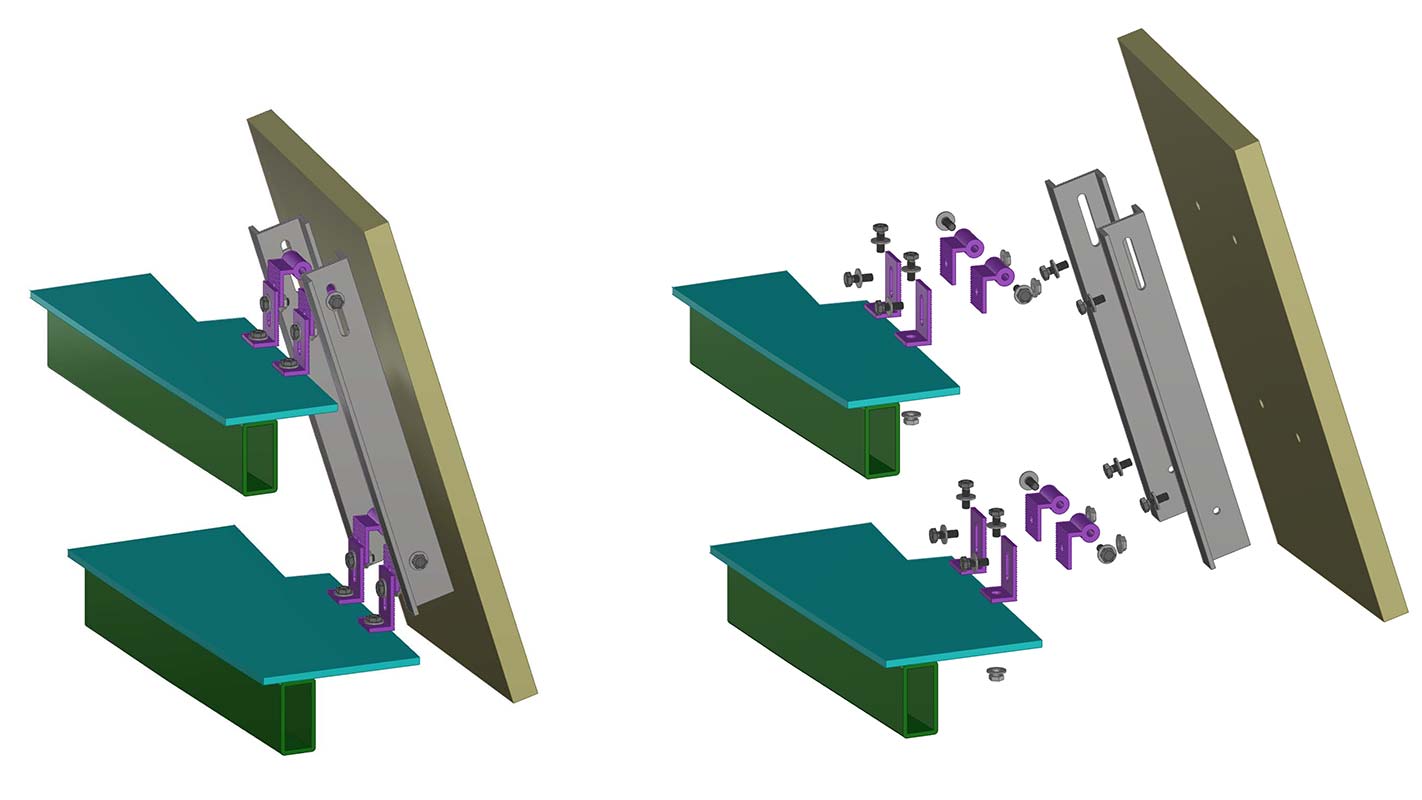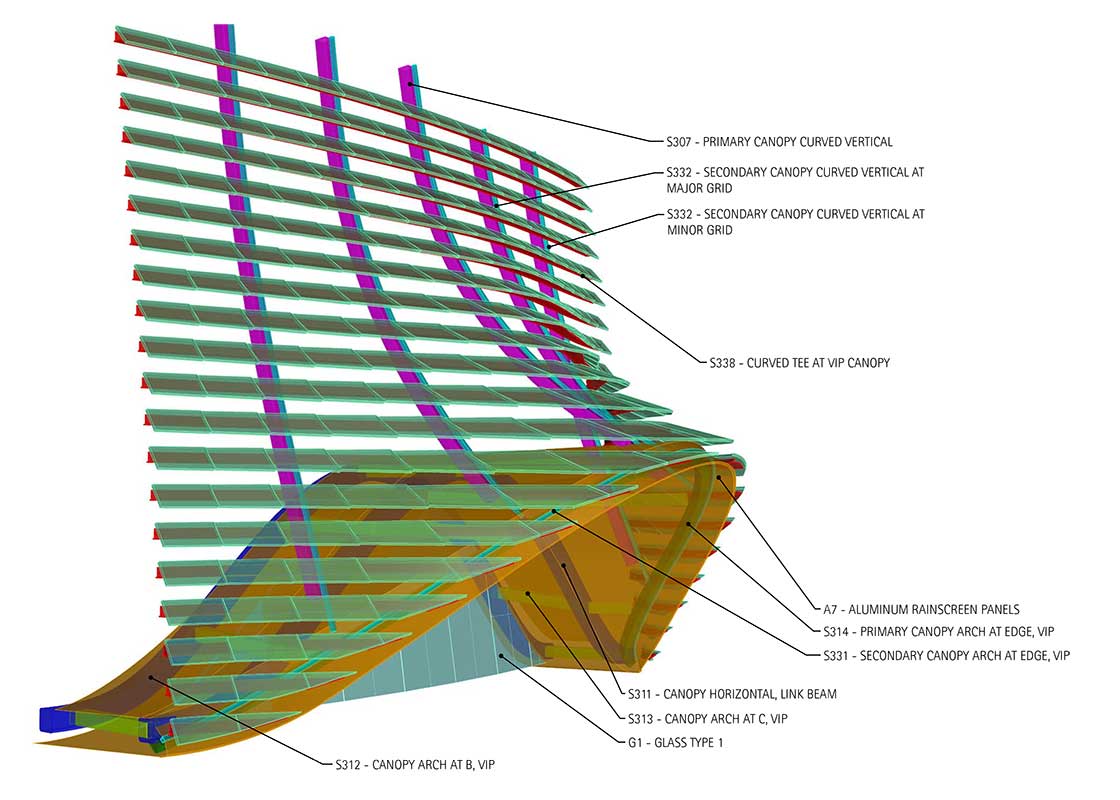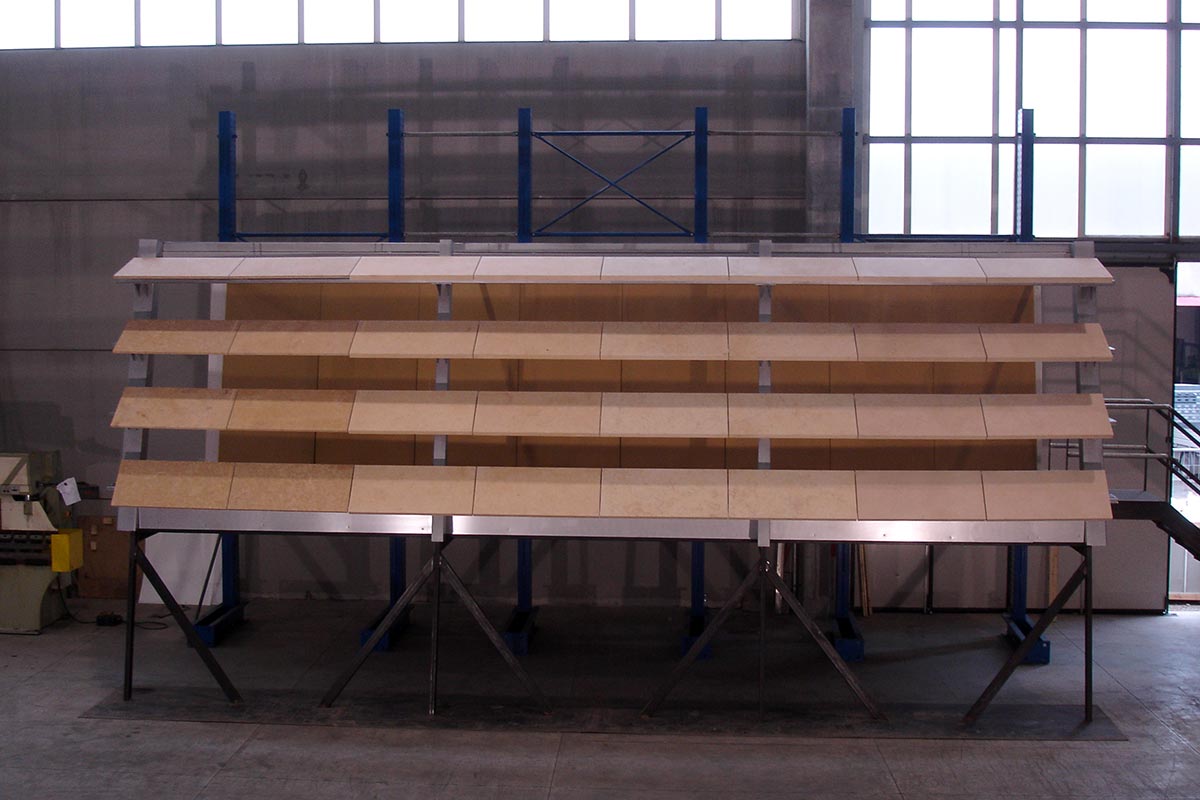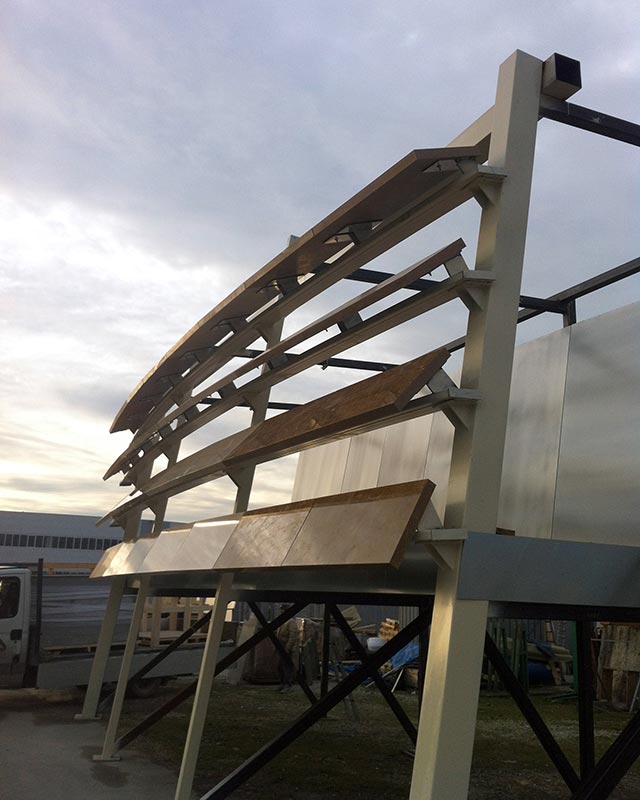ArchitectWORKac
Executive ArchitectEpstein
L’Assemblée Radieuse is a 200,000 ft2 (18,600 m2) conference center in Liberville, Gabon. The building design is based on a chamfered cone angled to create a sloped roof with a cascading pool. Three amorphous voids in the cone are carved out to create gardens, reminiscent of the geographic typologies of the region, and resulting in complex curved interior garden courtyard geometries. The geometric complexity, at the exterior, roof and gardens, necessitated a sophisticated BIM workflow to rationalize cladding penalization and to directly create fabrication level documentation through automated processes. The client engaged Front to manage this work-flow, as well as to complete the technical system design, analysis, and detailing of the facade systems.
The building facade, roof and all gardens are clad in limestone panels. The primary exterior system is made up of a stone rain screen with louvered panels supported on steel Ts with a gradient tilt at each row to minimize direct light transmission. A secondary metal panel rain screen houses sloping window and egress systems with a cascading promenade meandering around the circumference of the building between the rain screen systems. Stone tiles are utilized at the roof and parapet to create a continuous stone exterior with intricate substructure to accommodate the cascading geometry.
Due to the unique shapes of each garden, Front developed a system for shingling the stone panels, limiting the sizes so each panel could be mounted by two workers to rows of plates supported by moment frames. Intensive modeling was undertaken to optimize the size of stone panels and generate limited panel types that could be repeated throughout the building. Iterative algorithms were generated to minimize the number of panel types, while maintaining minimum spacing between panels to allow for assembly by adjusting the tilt of each panel in relationship to its neighbors.
Models were generated for all rain screen and structural systems. These were used primarily for coordination, visual studies, material quantification and systems coordination. The workflow was also designed to directly output fabrication data and drawings. Front was also engaged to model all structural steel and export models to Tekla for use by the steel detailers and contractors. This process allowed for front end quality control, clash detection, and member/connection optimization.


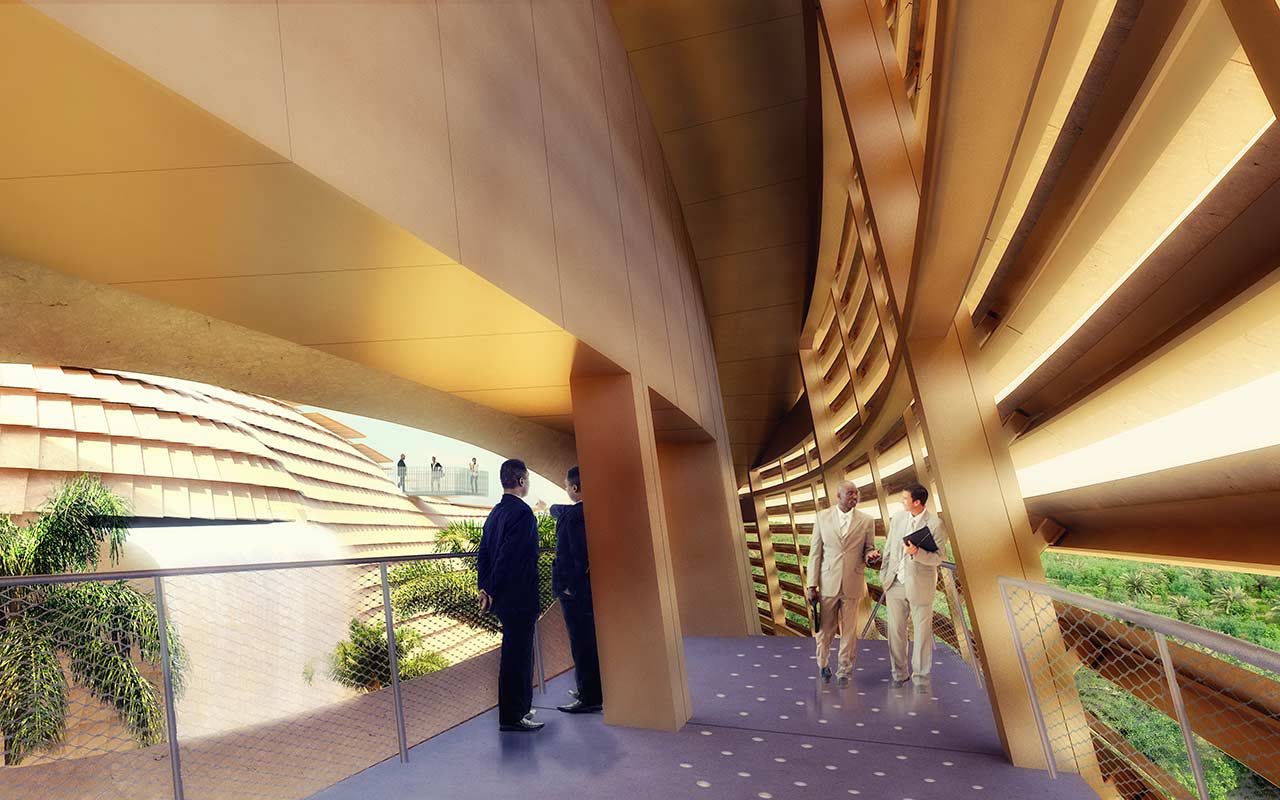
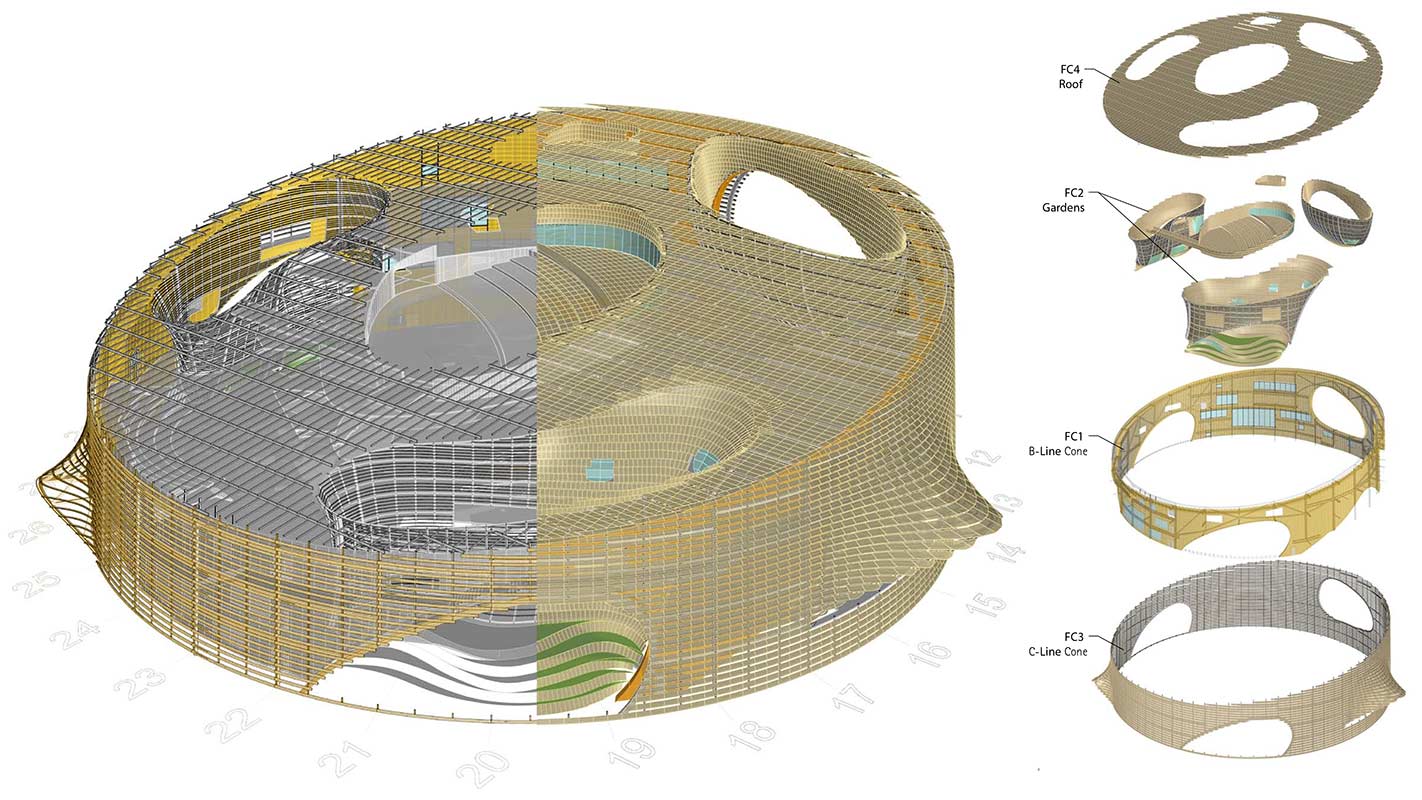
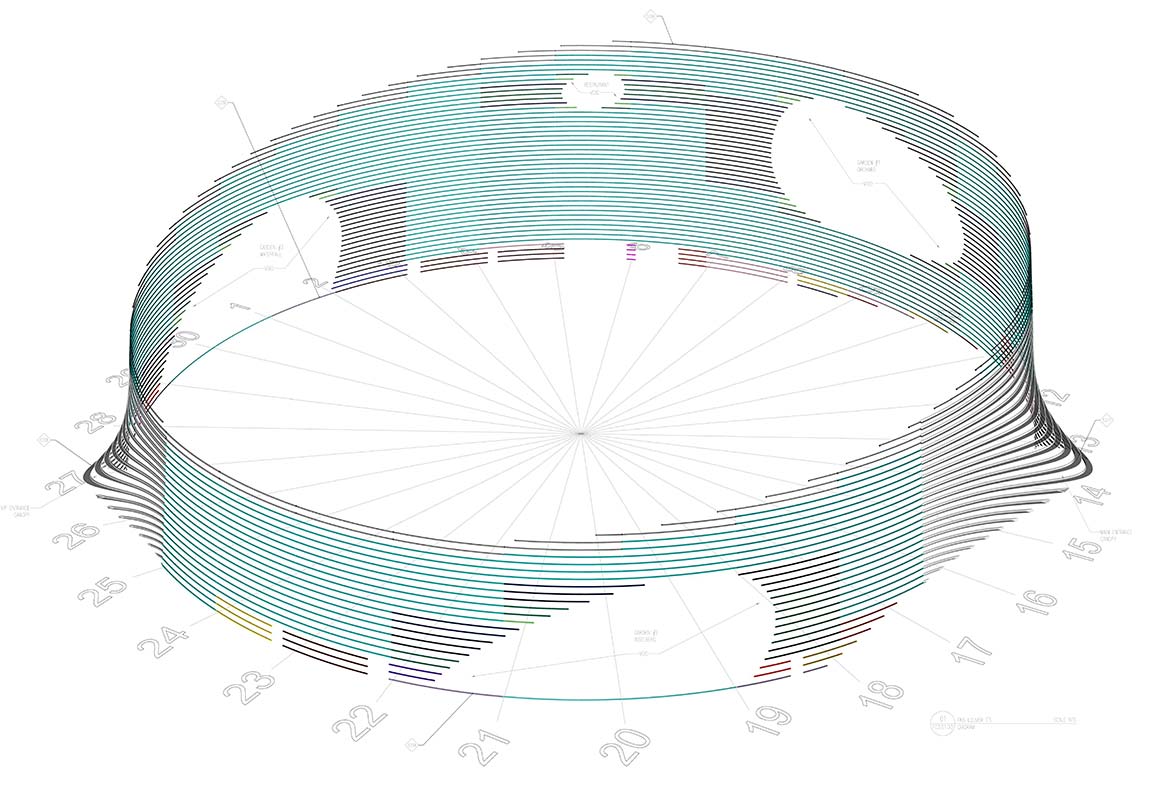
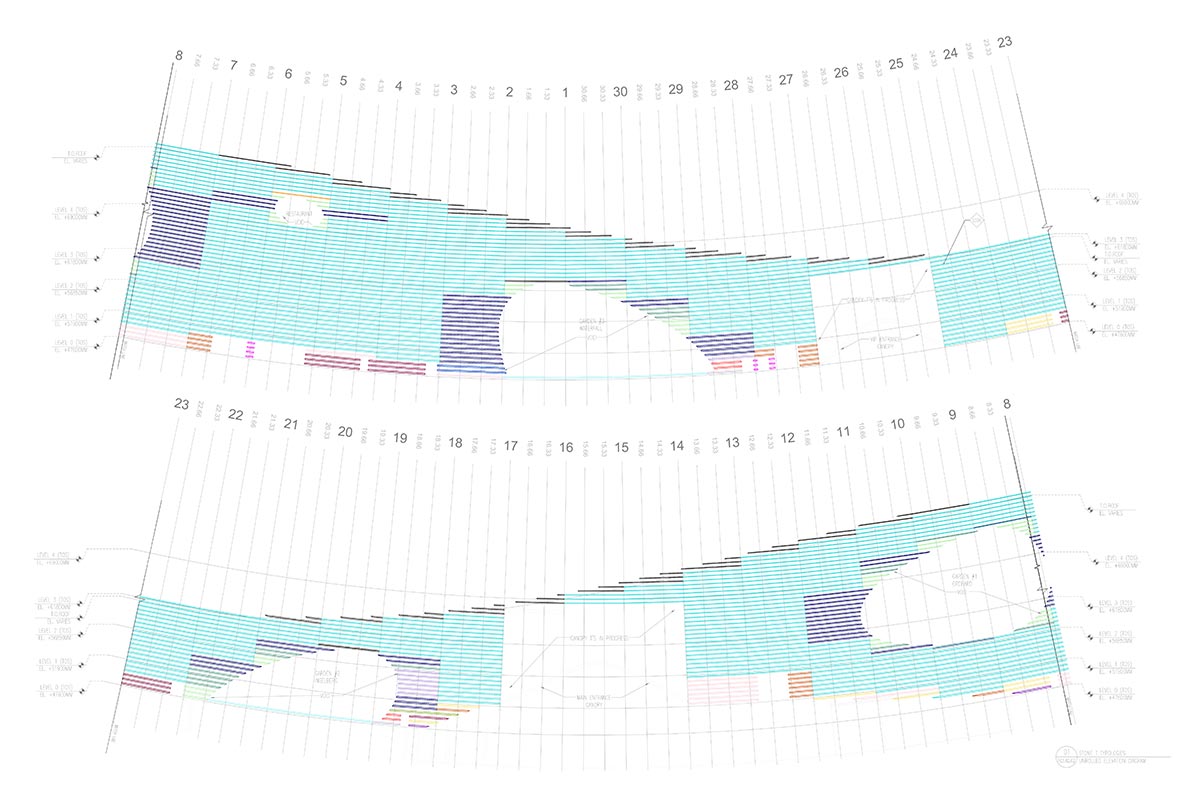
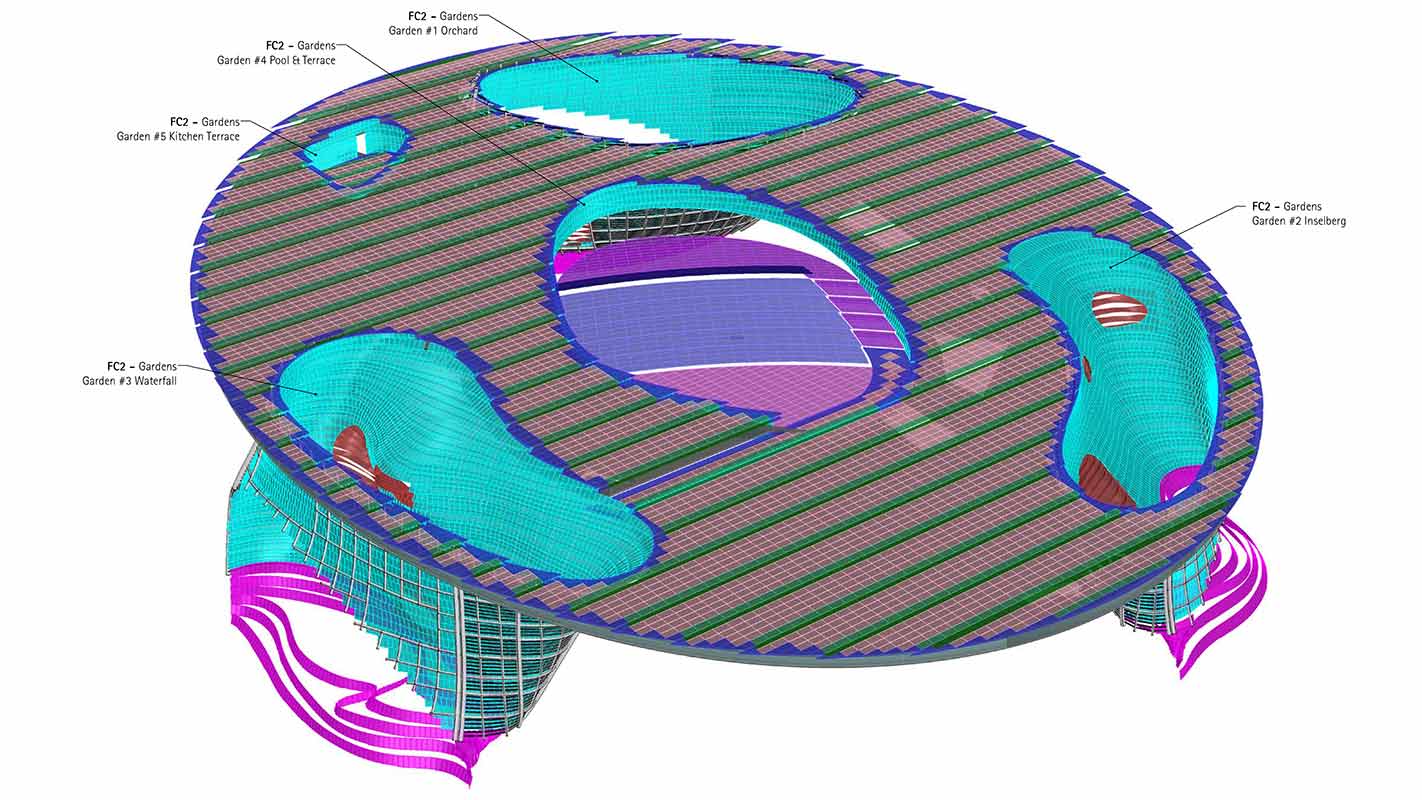
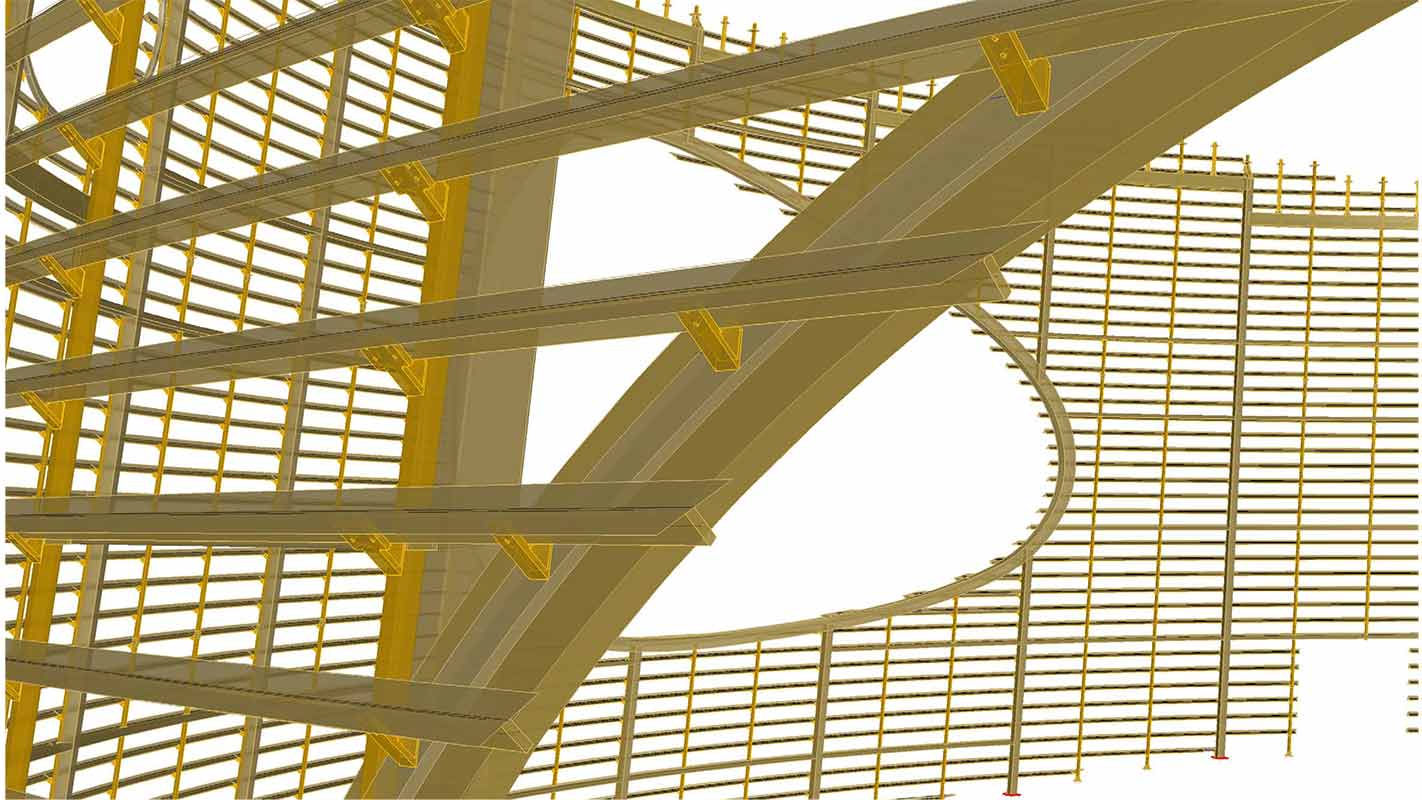
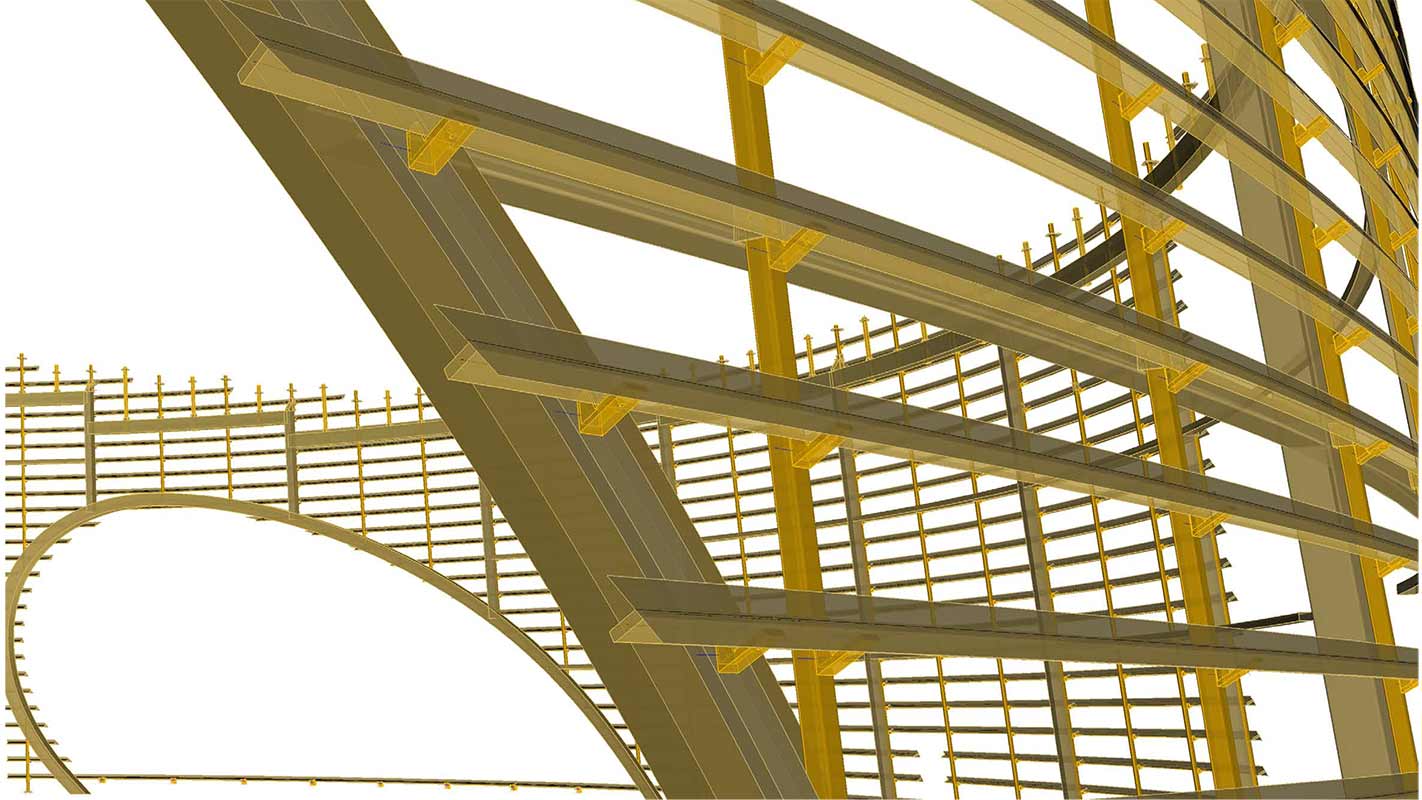
![BIM model view of garden facade steel sub-structure]](https://front.global/wp-content/uploads/2015/08/Gabon_12_1422x800.jpg)
